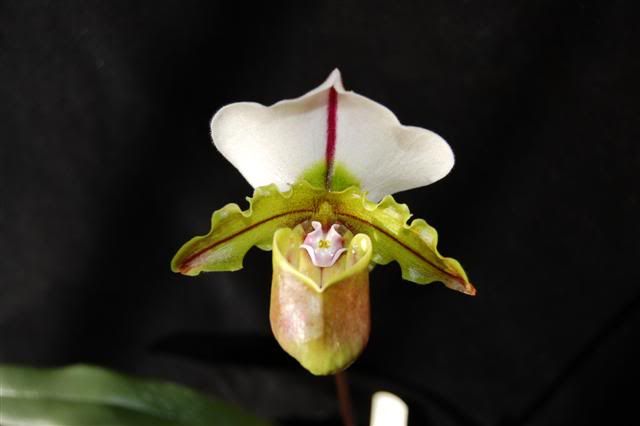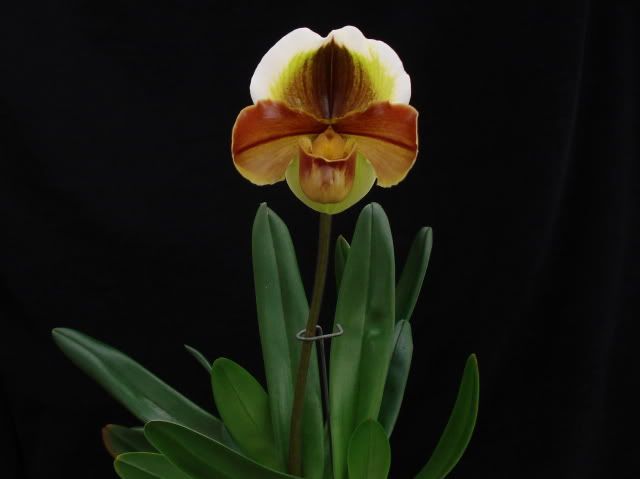J
Jorch
Guest
Here's my Paph Bruno in bloom.. my question, like the title says, is the 'raison-d'etre' for this hybrid? What was the hybridizer trying to achieve in this cross? The end result, in my untrained eyes, looks just like a spicerianum!




Well, maybe. No doubt, the cross was made to produce bigger spicerianum-like flowers; but, perhaps not to then deliberately deceive.......although the pesimist in me tends to agree.to create the "super species" look alike just to win awards

Ross is right - producing ANY first generation offspring would have been reason enough to make this hybrid. And what is wrong with a bogger, more vigorous spice witha fla dorsal anyways?
This is probably the base of the argument.
There is nothing wrong with a more bigger, flatter, more vigorous spice. But Bruno is not a spicerianum. How many others out there see it and now equate it with the species rather than a hybrid? In strictly artificially cultivation circles I guess people wouldn't care what the parentage is (or as representing), as long as that particular flower is big flat and pretty. In the hybrid circles, purity of parental history is not a priority, and since the end result is "an improvement over the wild standard" then it's mission accomplished, and maintaining good records (for the species purists) is a low priority. Many record mistakes happen when priority to documentation is low.
But now and then the species purists try to make a stand, and end up getting hosed by all the undocumented mutts floating around.
This may be a valid argument, today, when the "purity" of a species can be an issue, but I doubt this discussion would have even been held in 1890, when Paph Bruno was registered. The fact that the plant has been registered as Paph Bruno, shows there was no intent on the part of the hybridizer to defraud.
What sort of records would you have breeders maintain? Is a species still pure when a cross is made with plants of the same species from two separate geographical areas or from two different forms?
Why would you infer that breeders of hybrids care nothing for the accuracy of records?
Enter your email address to join: